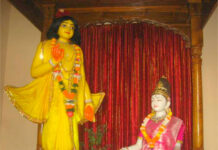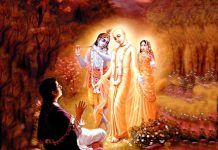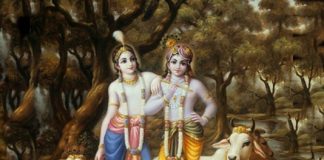Indubitably scientists are getting smarter but there always is, one after another, mystery presented by material nature that keeps them busy. Their description of how this particular star, named KIC 8462852 by them, behaves reminds of how a father plays with his growing child in order to make him or her smarter.

“The weird light blips coming from this star might be caused by a family of comets or collision debris. Every now and then, a distant star called KIC 8462852 dims by as much as 20 percent. That’s huge. Even a passing planet as big as Jupiter would only block about 1 percent of the star’s light. Ruling out a planet, scientists have no idea what could be eclipsing the star (which is informally known as ‘Tabby’s Star’). The leading hypothesis is a family of really big comets, but that doesn’t quite fit. Astronomer Jason Wright pointed out that the light patterns are consistent with what we’d expect if aliens had built a Dyson swarm of solar collectors around the star to harness its energy. This hypothesis isn’t perfect either.
The mystery deepened when astronomer Bradley Schaefer found evidence suggesting the star had also been dimming by about 16 percent each century. Such a huge drop in light over time made the comet hypothesis seem less likely. Compared to the 36 giant comets you’d need to create the star’s 20 percent dimming, you’d need 648,000 giant comets to explain the century-long dimming. “I do not see how it is possible for something like 648,000 giant-comets to exist around one star,” he wrote, “nor to have their orbits orchestrated so as to all pass in front of the star within the last century.”” (Read more ‘Alien Megastructure’ Star Only Gets More Mysterious | Popular Science)
Notwithstanding their proposals and assumptions, it is always refreshing to hear from a person who has heard from authoritative sources. These persons are not among those whose theories change every few years or centuries. Their knowledge is based on Vedic science and so is permanent. This itself is a great relief.
Here is what Srila Prabhupada says:
“The material world is only one fourth of the Supreme Personality of Godhead’s creation, but it is unlimited and impossible for anyone to know or describe, even with the qualification of a life as long as that of Brahma, who lives for millions and millions of years. Modern scientists and astronomers try to explain the cosmic situation and the vastness of space, and some of them believe that all the glittering stars are different suns. From Bhagavad Gita, however, we understand that all these stars (naksatras) are like the moon, in that they reflect the sunshine [Bg. 15.12]. They are not independent luminaries.
Bhuloka is explained to be that portion of outer space through which the heat and light of the sun extend. Therefore it is natural to conclude that this universe extends in space as far as we can see and encompasses the glittering stars. Srila Sukadeva Gosvami admitted that to give full details of this expansive material universe would be impossible, but nevertheless he wanted to give the King as much knowledge as he had received through the parampara (disciplic succession) system. We should conclude that if one cannot comprehend the material expansions of the Supreme Personality of Godhead, one certainly cannot estimate the expansiveness of the spiritual world.”
There shouldn’t be any doubt that regardless of time, it is impossible for modern scientists to know the entire universe. The reason is, their machines are made of gross matter, but the universe contains subtle matter as well. Interestingly, there are incidents recorded in the scriptures, particularly of a great sage, named Durvasa Rishi, describing how he traveled to the edge of the universe and approached the maintainer of the universe, Lord Vishnu, who resides on a white island, called Svetadvipa, in the Milk ocean!
Hmmm… a sage traveling to the age of the universe and meeting someone who resides on a white island in ocean of milk? Must be kidding, right? Not at all. The whole concept may sound imaginary to those having no clue about the cosmic creation, maintenance and annihilation, and the extraordinary abilities great yogis can achieve by practicing formulas given in the Vedic scriptures, but Durvasa Rishi’s travel is a part of history, called puranas in sanskrit, of this universe and recorded in number of ancient Indian scriptures. The name of the star he visited and met Lord Vishnu on a white island (Sveta dvipa) located in the milk ocean is known by modern scientists and astronomers as the North Star or Pole Star. No surprise this Pole Star holds the most significant position in the sky in that not only is it fixed but all the stars and planets move in their orbits keeping North Star as the center.
“While other stars’ apparent positions in the sky change throughout the night, as they appear to rotate around the celestial poles, pole stars’ apparent positions remain virtually fixed. This makes them especially useful in celestial navigation: they are a dependable indicator of the direction toward the respective geographic pole although not exact; they are virtually fixed, and their angle of elevation can also be used to determine latitude.” (Read more https://en.wikipedia.org/wiki/Pole_star)
We find in Srimad Bhagavatam (4.9.25) how and why all planets circumabulate the Polestar out of respect. While commenting on Dhurva maharaj’s kingdom that was offered by Lord Vishnu, Srila Prabhupada says in his purport:
“The Lord says, “You will not come back to this material world, for you will reach mat-sthānam, My abode.” Therefore Dhruvaloka, or the polestar, is the abode of Lord Viṣṇu within this material world. Upon it there is an ocean of milk, and within that ocean there is an island known as Śvetadvīpa. It is clearly indicated that this planet is situated above the seven planetary systems of the Rishis, and because this planet is Viṣhṇuloka, it is worshiped by all other planetary systems.”
There are descriptions of planets with oceans containing salt water, sugarcane juice, liquor, clarified butter, milk, emulsified yogurt, and sweet drinking water. On our planet, Earth, we have experience of only salt water ocean but on other planets there are more varieties.
As we can see, the universe is too complex and full of variegatedness for human brain to comprehend. The so-called KIC 8462852 star is not the only one that bewilders or fascinates scientists; there are millions of other stars which, if located and studied, can open a whole new world of excitement. However, the prerequisite is, the study must be done as per the information given in the Vedic scriptures. Then only is there a hope of knowing something meaningful. The most revealing information we get from the scriptures is, all stars and planets shelter intelligent living beings. If you are interested in how yogis can visit distant worlds by achieving different perfection, called siddhis, which are eight in total, studying Srimad Bhagavatam with extensive purports by Srila Prabhupada is the best way to go.



































